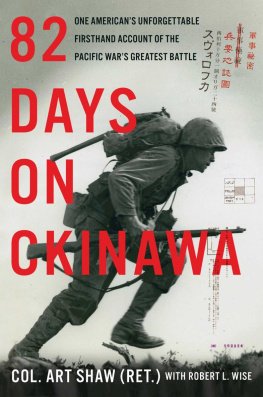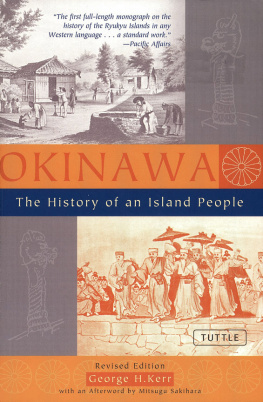
This edition is published by PICKLE PARTNERS PUBLISHINGwww.picklepartnerspublishing.com
To join our mailing list for new titles or for issues with our books picklepublishing@gmail.com
Or on Facebook
Text originally published in 1926 under the same title.
Pickle Partners Publishing 2015, all rights reserved. No part of this publication may be reproduced, stored in a retrieval system or transmitted by any means, electrical, mechanical or otherwise without the written permission of the copyright holder.
Publishers Note
Although in most cases we have retained the Authors original spelling and grammar to authentically reproduce the work of the Author and the original intent of such material, some additional notes and clarifications have been added for the modern readers benefit.
We have also made every effort to include all maps and illustrations of the original edition the limitations of formatting do not allow of including larger maps, we will upload as many of these maps as possible.
THE CONQUEST OF OKINAWA:
AN ACCOUNT OF THE SIXTH MARINE DIVISION
BY
PHILLIPS D. CARLTON, MAJOR
U. S. Marine Corps Reserve
TABLE OF CONTENTS
Contents
TABLE OF CONTENTS
FOREWORD
THIS is one of a series of monographs prepared by the Historical Division that deals with the activities of Marine Corps units in World War II. Early in March, 1945, Colonel John Potts, at that time officer in charge of the Historical Division, arranged to send out historical teams to work with the various units of the III Amphibious Corps during the Okinawa Campaign. The mission of these teams was threefold: To observe and take notes on the operation; to interview as many officers and men of the participating units as possible; and to collect valuable orders, papers, and other documents pertinent to the campaign. Major Almet Jenks, USMCR, covered the III Amphibious Corps Headquarters, Captain Phillips D. Carleton, USMCR, went to the Sixth Marine Division, and Sergeants Paul Trilling and Kenneth Shutts were with the First Marine Division.
This monograph is the work of Captain Carleton. While on Okinawa he lived with the men of the Sixth Marine Division, watched them fight and listened to their accounts of the action. He was with the Twenty Ninth Marines on Motobu Peninsula, the Twenty Second Marines during the fight for Naha, and spent considerable time with the Sixth Reconnaissance Company. Most of the material in this monograph is the result of Captain Carletons personal observations or was gained through his interviews with the officers and men who fought in the Okinawa battles.
Within certain enforced limits this monograph is factual. No one individual can be everywhere at once, nor will his version of what happened during a given battle agree with everyone elses version. In its present form this is a preliminary monograph; there are some parts that are not treated as comprehensively as is desired. It is hoped, therefore, that those persons who read it and have first-hand information which will make the story more complete and accurate, will forward their comments, constructive criticisms, and suggestions to the Historical Division within sixty days after the receipt of the monograph, so that it may be revised and published in a more finished form.
HOWARD N. KENYON, Colonel, USMC
Officer-in-Charge, Historical Division
LIST OF MAPS
Map No. 1. Movements of the 6th Marine Division
Map No. 2. Okinawa ShimaArea Captured by 6th Marine Division 1 April21 June
Map No. 3. Place Names of Northern Okinawa
Map No. 4. 4th Marines Battle for Mt. Yaetake 14 April 1945
Map No. 5. Battle for Mt. Yaetake 16 April 1945
Map No. 6. Final Drive (Sixth Marine Division Motobu Peninsula)
Map No. 7. Terrain, 29th Marines Sector
Map No. 8. G & E Companies, 4th Marines
Map No. 9. Stylized Terrain Diagram
Map No. 10. Patrol Action
Map No. 11. Ambush
Map No. 12. 22nd Marine Patrols
Map No. 13. Figure 1
Map No. 14. Figure 2. Direction of Battalion Attacks (Hasty Sketch)
Map No. 15. Enemy Fields of Fire (Artillery and Anti-Tank)
Map No. 16. OkinawaBattle for Sugar Loaf Hill (Attack of 2nd Bn. 22nd Marines 14 May 1945)
Map No. 17. Division Front 16 May 1945
Map No. 18. OkinawaBattle for Sugar Loaf Hill (Attack of 17-19 May, 1945)
Map No. 19. Attack of 22nd Marines 29 May1 June 1945
Map No. 20. Diagram of Military Corridors on Oroku Peninsula
Map No. 21. Area 3-292-29 Oroku Peninsula
Map No. 22. Simplified Diagram of Terrain on Oroku over which 22nd Marines Fought
Map No. 23. Zone of Action, Fourth Marines Oroku Peninsula 4-14 June 1945
Map No. 24. Mezado Ridge, Hill 69, & Kuwanga Ridge (Hasty Sketch)
Map No. 25. Kiyamu Ridge & Southern End (Hasty Sketch)
Map No. 26. Battle for Ara-Saki Peninsula 16-21 June 1945
PANORAMIC VIEWS
Panoramic View Yaetake
View from Queen Hill
NOTE
In this monograph such numerical symbols as 1/29 or 3/4 etc., are used sometimes instead of the more conventional designations, i. e. (in this case) First Battalion, Twenty Ninth Marines, and the Third Battalion, Fourth Marines. The above symbols were often used in conversation, both during and after the operation.
CHAPTER IBATTLES ON MOTOBU PENINSULA AND IN THE NORTH
The 6th Marine Division was formed 7 September 1944, but though it was activated at that date, the units composing it were for the most part experienced and well-trained. The 22nd and the 4th Marines had been reinforced regiments. They had already worked together when as the First Provisional Brigade they had fought at Guam. The 29th Marines had been formed at Camp Lejeune and had been trained there, but the first battalion of the regiment had been formed from cadres of officers and men taken from the 2nd Division shortly after Tarawa; it had at first been called the 2nd Separate Infantry Battalion but on the way to Saipan its designation had been changed to the 1st Battalion, 29th Marines, and attached to the 2nd Division it had fought notably. It was this battalion which had been first on the summit of Mt. Tapotchau. In large part, the Engineer Battalion, the Pioneer Battalion, the Tank Battalion, and the Artillery Regiment of the new division were formed from the reinforcing elements of the two original regiments.
The 4th Marines, reinforced, activated 8 January 1944, was also formed from veteran units, the four Raider Battalions, when the Commandant of the Marine Corps decided to abolish both the Parachute and the Raider Battalions as such. The paratroopers had never been employed as air-borne troops; {1} the raider battalions had seen little of the service for which they were originally intended; that is, raids into enemy territory, but had become magnificently trained shock troops. The parachute battalions were deactivated and the members of them formed cadres within the newly formed 5th Marine Division. From the raider battalions was formed the regiment which took the name of the famous Marine Regiment that had been lost at Bataan. The 1st and 4th Raider Battalions became the 1st and 2nd Battalions of the new regiment, the 3rd Battalion remained as the 3rd, and the original 2nd Battalion became Weapons Company of the Regiment. The new regiment had as Commanding Officer, Colonel Alan Shapley (then Lt. Colonel), who had handled the 2nd Raider Regiment, Provisional, consisting of the 2nd and 3rd Raider Battalions during the Bougainville Operation. {2} Much of the original personnel still remained, though many officers and men had been sent home on rotation. Colonel Shapley had proceeded to build an esprit de corps and sense of unity into his new organization which had been formed from units each desperately proud of its own achievements. It was this new regiment which had taken the island of Emirau in the St. Matthias Group; this operation was bloodless, but a triumph of logistics and organization, since the plans for it had been formed and put into execution with astonishing speed. {3} On 21 July the regiment landed below Agat on Guam as part of the 1st Provisional Brigade; the beaches were bloodyflanking guns and defences just inland piled up dead Marines; it stood off a terrific counterattack on the night of D-day, took Mt. Alifan, and then, while the 77th Infantry Division guarded the mid-island passes and the high ground inland, marched to the neck of the Orote Peninsula and fought down the length of it, side by side with the 22nd Marines. The fighting was through dense jungle; there was no room to maneuver; the enemy was entrenched in concrete pillboxes. Orote Peninsula was taken by 29 July and the last organized resistance of the Japanese was broken. Later the 4th Marines patrolled in the northern end. The 4th Marines or the component parts of the regiment had fought at Tulagi, Guadalcanal, Makin, New Georgia, Bougainville, Emirau, and Guam. They were seasoned troops.












